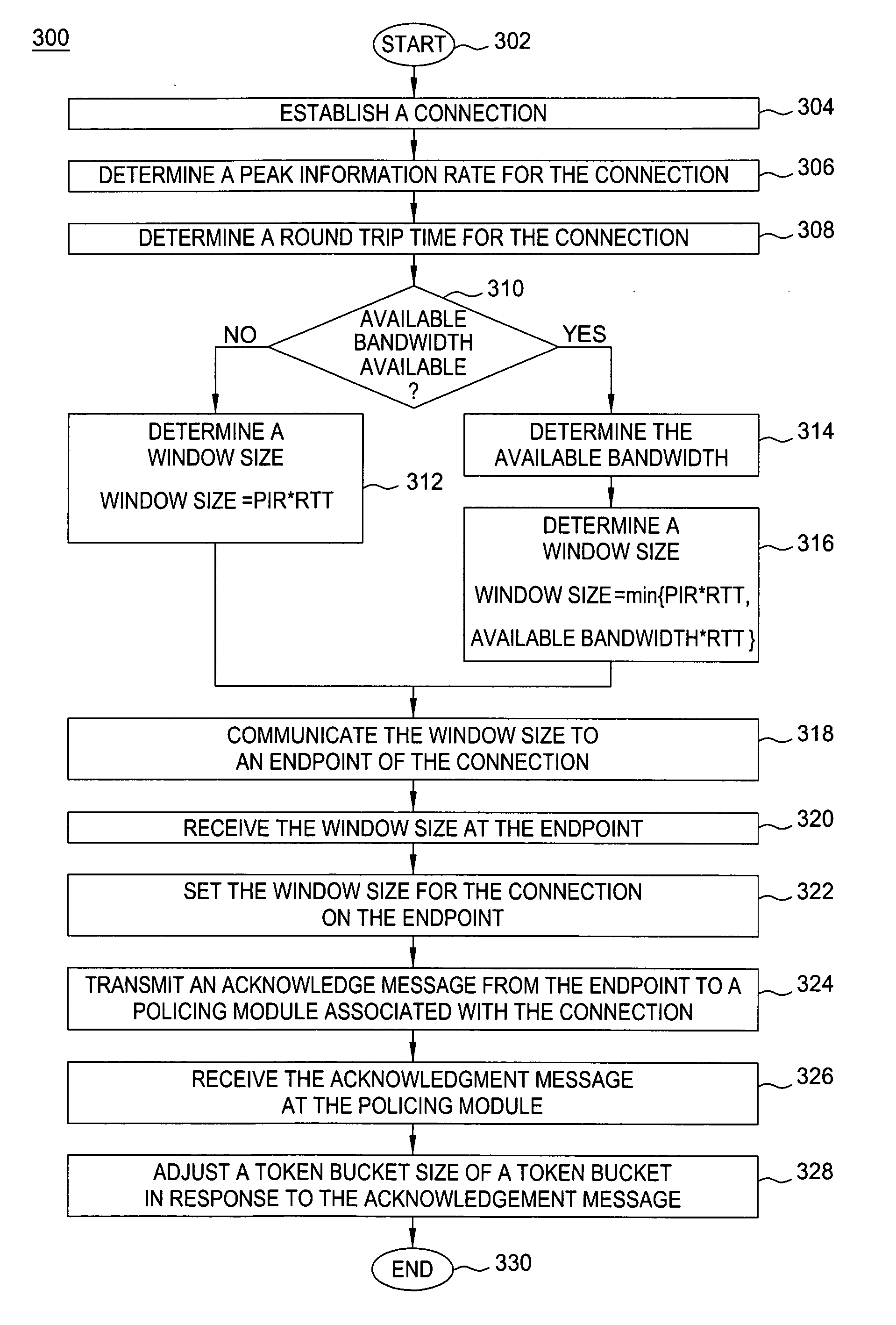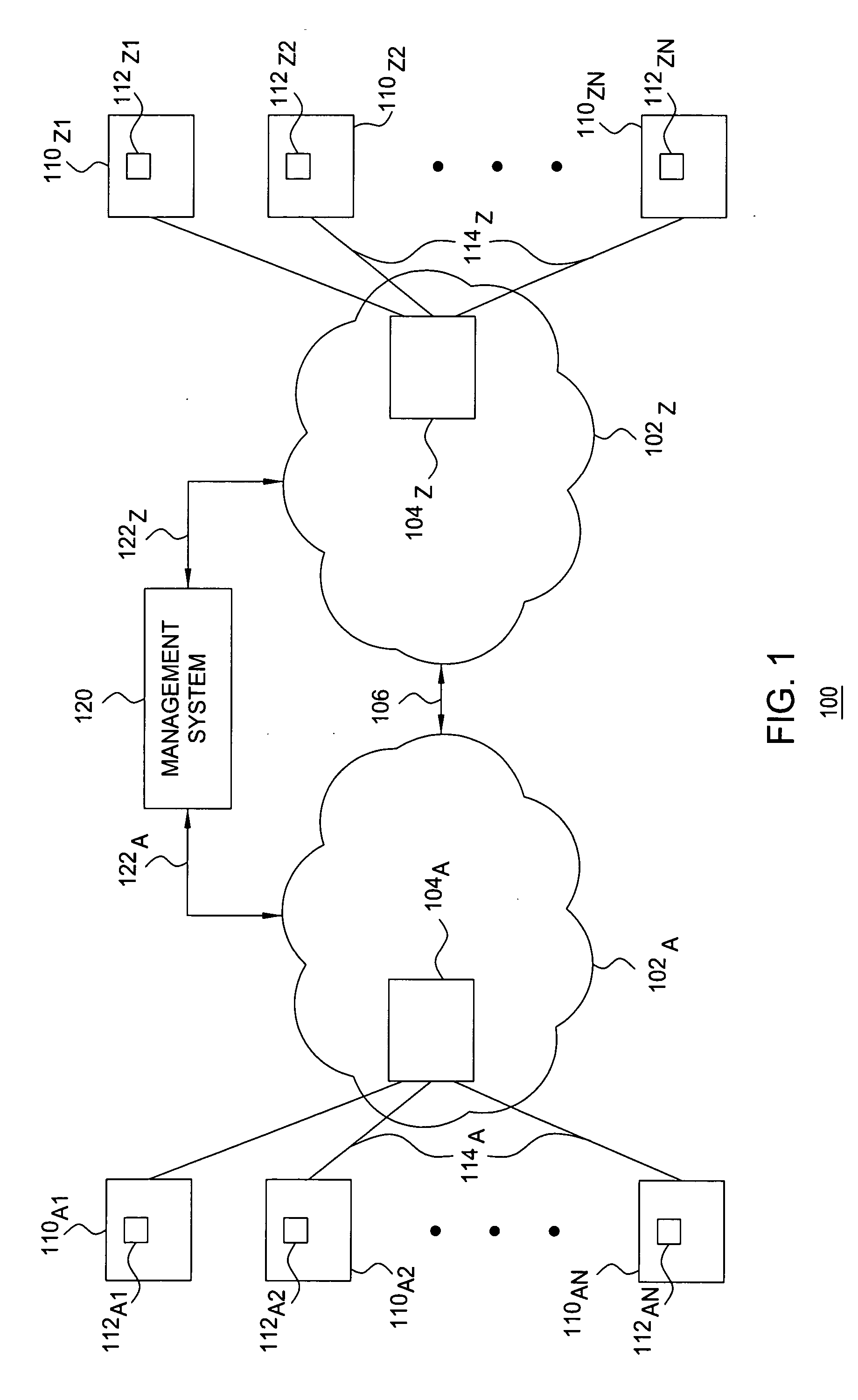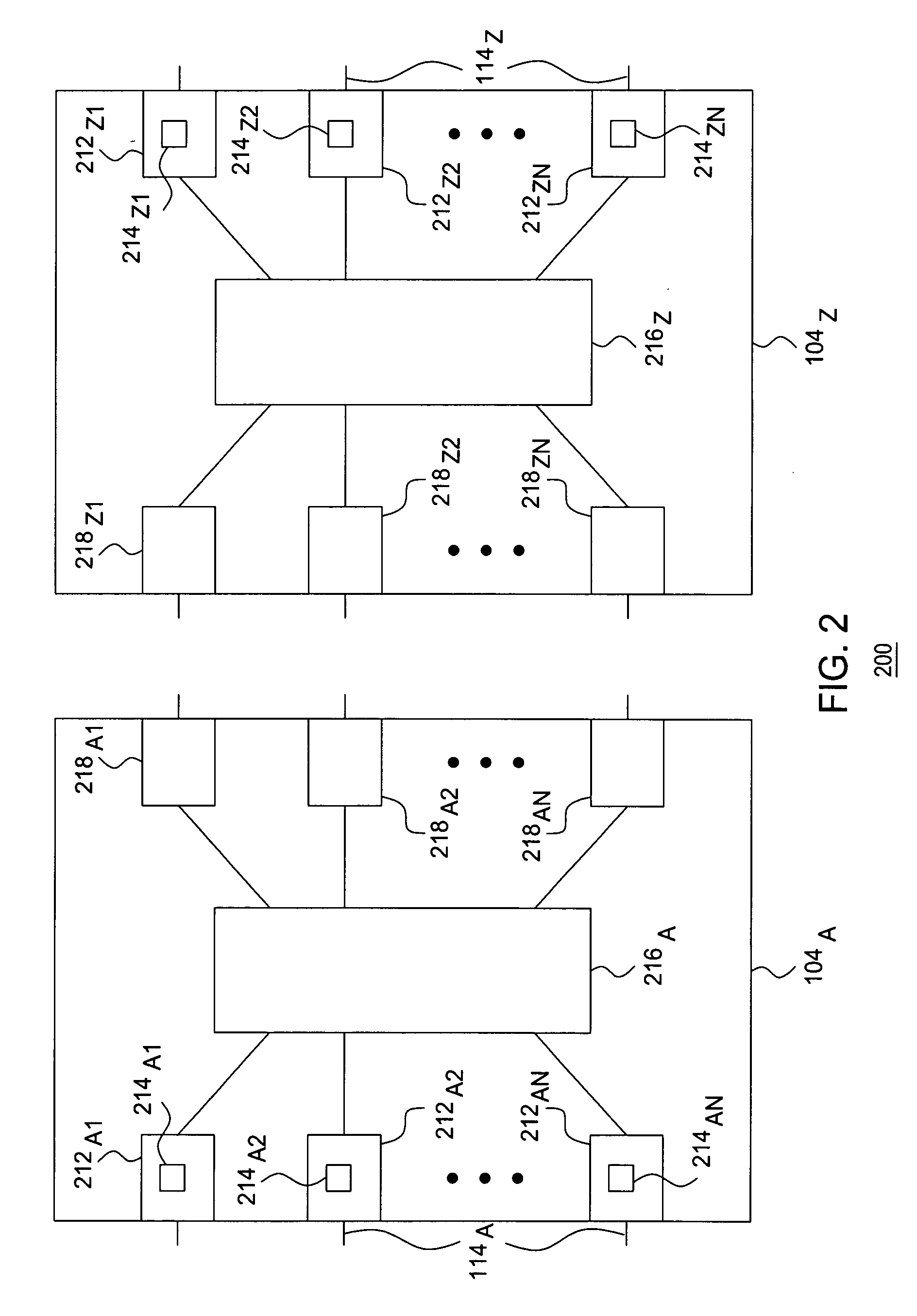Method for policing-based adjustments to transmission window size
a transmission window and window size technology, applied in the field of communication networks, can solve the problems of large data bursts, large buffer space, and packet drops, and achieve the effect of reducing the number of packets
- Summary
- Abstract
- Description
- Claims
- Application Information
AI Technical Summary
Benefits of technology
Problems solved by technology
Method used
Image
Examples
Embodiment Construction
[0012] The present invention is discussed in the context of a Transmission Control Protocol (TCP) / Internet Protocol (IP); however, the present invention can be readily applied to other networks and network topologies. The present invention enables policing-based determination of transmission window size. The present invention provides a method for determining an optimum window size for a connection. The present invention provides a method for adjusting the window size from a current window size to the determined window size. In one embodiment, the connection is a TCP connection and the associated window size is a TCP window (WND) parameter.
[0013] In normal operation, TCP reacts to packet drops anywhere in an end-to-end data connection by reducing the TCP transmission rate (i.e., reducing the window size of the connection). In normal operation, however, reaction to packet drops resulting from policing behavior results in an actual transmission rate that is below the desired peak inf...
PUM
 Login to View More
Login to View More Abstract
Description
Claims
Application Information
 Login to View More
Login to View More - R&D
- Intellectual Property
- Life Sciences
- Materials
- Tech Scout
- Unparalleled Data Quality
- Higher Quality Content
- 60% Fewer Hallucinations
Browse by: Latest US Patents, China's latest patents, Technical Efficacy Thesaurus, Application Domain, Technology Topic, Popular Technical Reports.
© 2025 PatSnap. All rights reserved.Legal|Privacy policy|Modern Slavery Act Transparency Statement|Sitemap|About US| Contact US: help@patsnap.com



